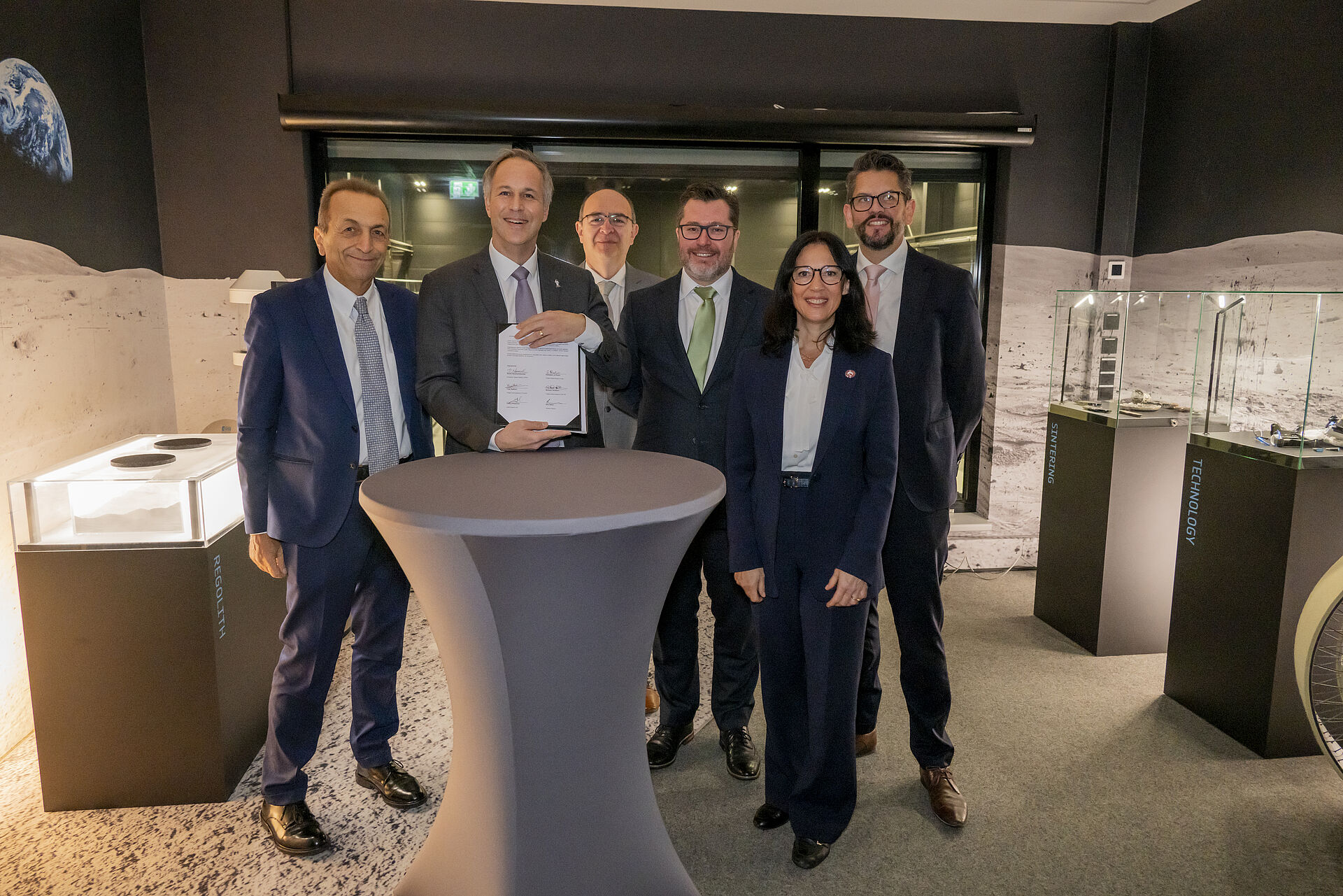Cologne/Bremen, November 20, 2025 – OHB System AG has been awarded a contract to supply three subsystems for the Argonaut Lunar Descent Element (LDE, one of the 3 components of ESA’s Argonaut mission). The official contract signing with prime contractor Thales Alenia Space took place today at the European Astronaut Centre in Cologne.
Through the Argonaut program, ESA is working to establish reliable and independent European access to the Moon, enabling regular missions to deliver cargo, scientific instruments, and infrastructure to the lunar surface.
The Argonaut lander has a modular design and consists of three main elements: the Lunar Descent Element (LDE), the Cargo Platform Element (CPE), and the payload. The LDE is the actual landing module and has the function of safely bringing the payload to the lunar surface.
As part of the core industrial team led by Thales Alenia Space in Italy, OHB will supply the following subsystems for the LDE:
Electrical Power Subsystem (EPS): This subsystem generates, stores, and distributes electrical power. Key components include solar panels with a peak output of 900 watts, a 150-volt battery, and a distribution unit.
Telemetry, Tracking, and Command Subsystem (TT&C): The TT&C subsystem serves as the vital communication interface with Earth. Featuring a dual-band architecture (X-band and S-band), it enables real-time video transmission of the lunar landing.
Guidance, Navigation, and Control Subsystem (GNC): The GNC subsystem ensures the lander navigates and lands safely. Through innovative algorithms that integrate lunar terrain data and autonomously detect hazards, it guarantees precise landings, from rocket separation to touchdown.
"A European presence on the Moon is a vision we at OHB have been working toward for many years. That’s why we are thrilled to play a pivotal role in this mission by contributing essential subsystems to the Argonaut LDE, helping to further advance Europe's space exploration capabilities," said Chiara Pedersoli, CEO of OHB System AG.
Overall, the Argonaut lander has a height of six meters, a diameter of 4.5 meters, and a launch mass of nearly 10 tons. It can carry roughly 1.5 tons of payload to the lunar surface and is designed to land with an accuracy of at least 250 meters, with a target landing site near the Moon's south pole. The lander is built to survive the extreme conditions of lunar nights, with temperatures as low as -150°C and complete darkness for up to 14 days.
The first lander is scheduled to launch in 2030 aboard an Ariane 6.4 rocket. After approximately seven days in transit, the lander will enter a low lunar orbit, where it will remain for up to 45 days before initiating its descent and landing.
Contact for media representatives:
Marianne Radel
Head of Corporate Communications
Phone: +49 421 2020 9159
Email: marianne.radel@ohb.de
Contact for investors and analysts:
Marcel Dietz
Investor Relations
Phone: +49 421 2020 6426
Email: ir@ohb.de



